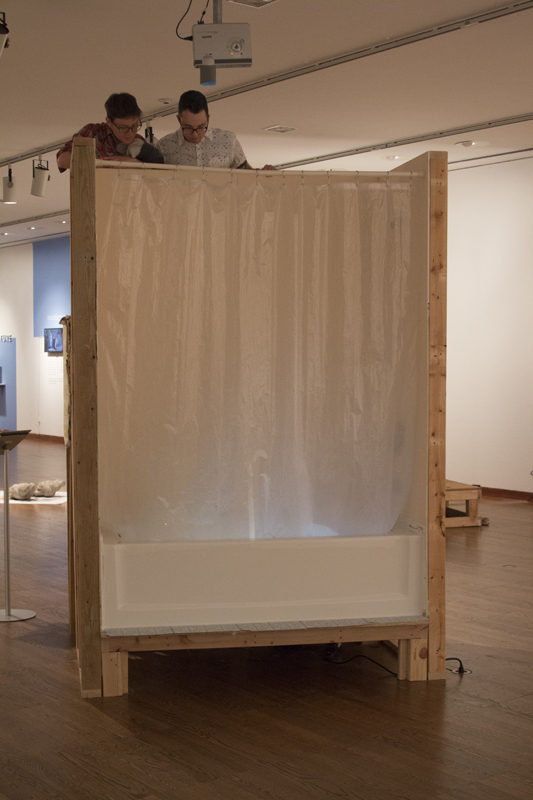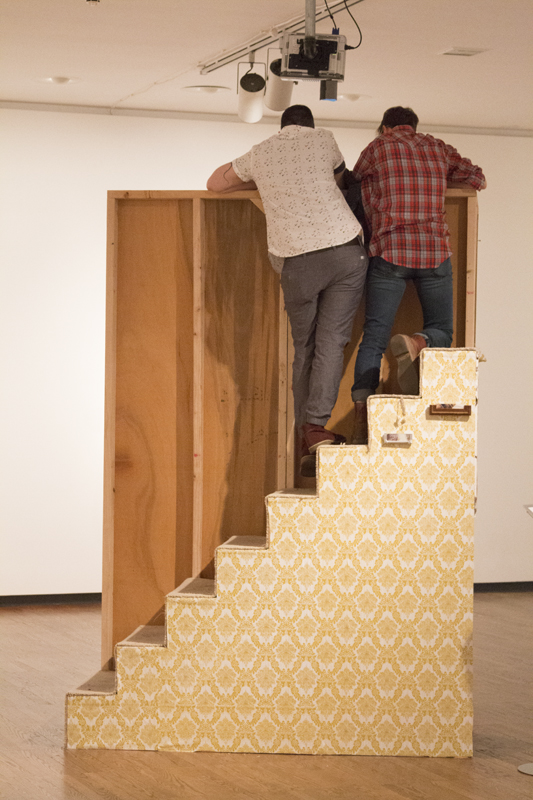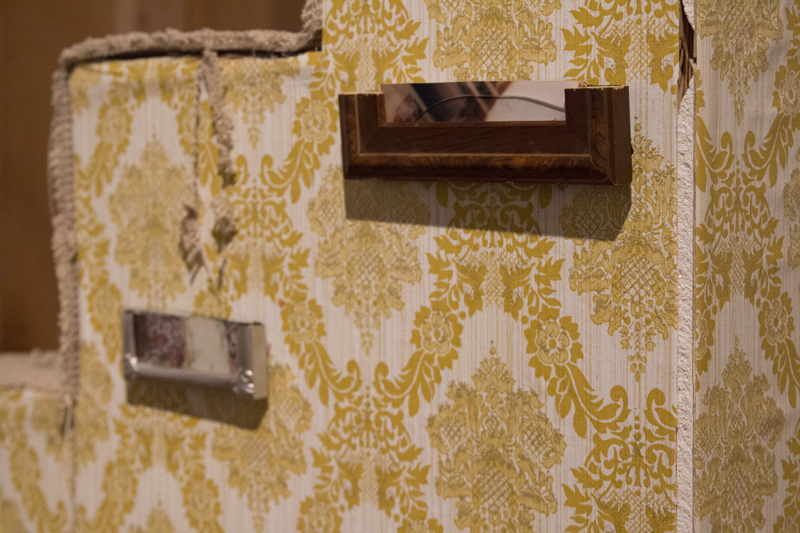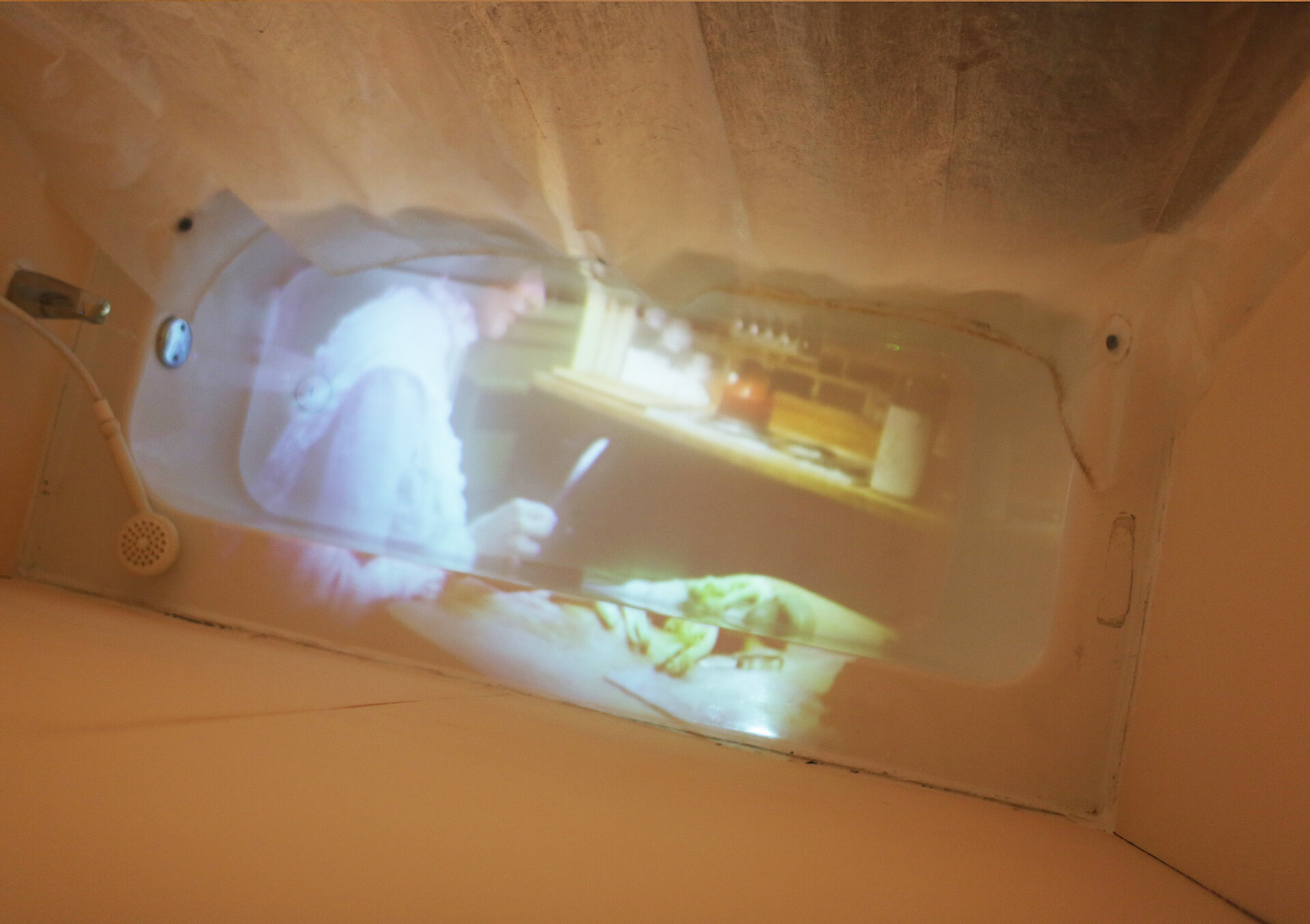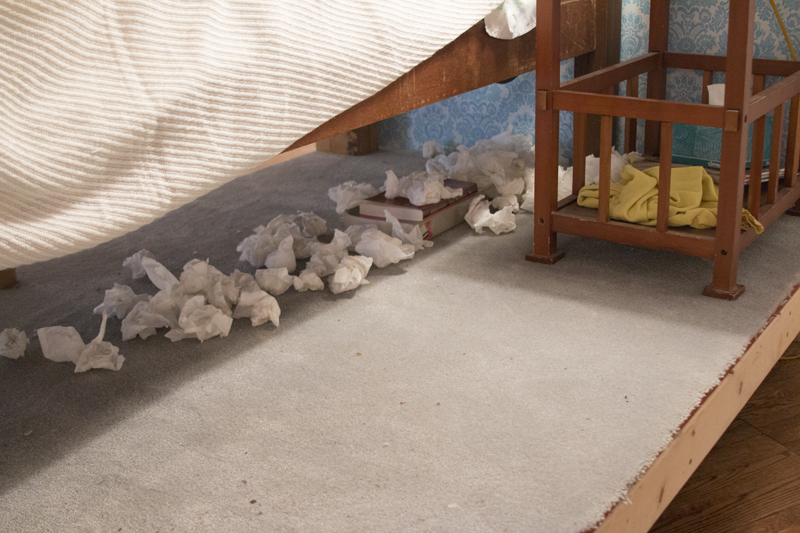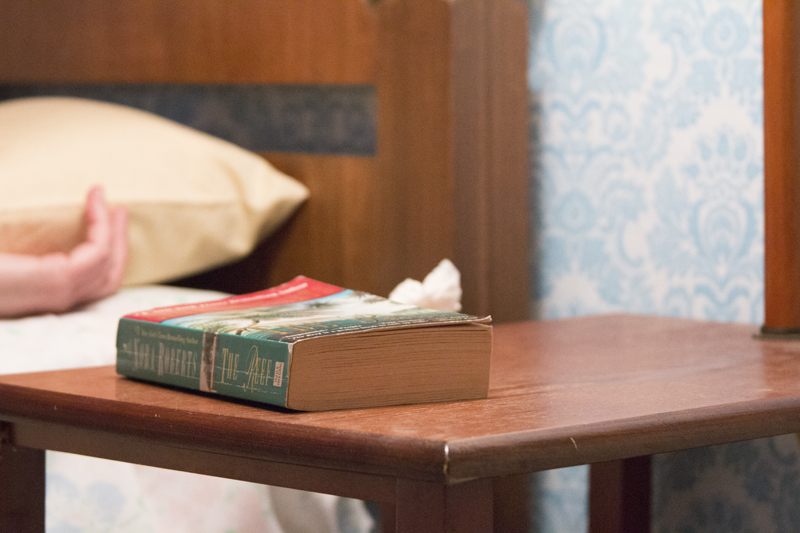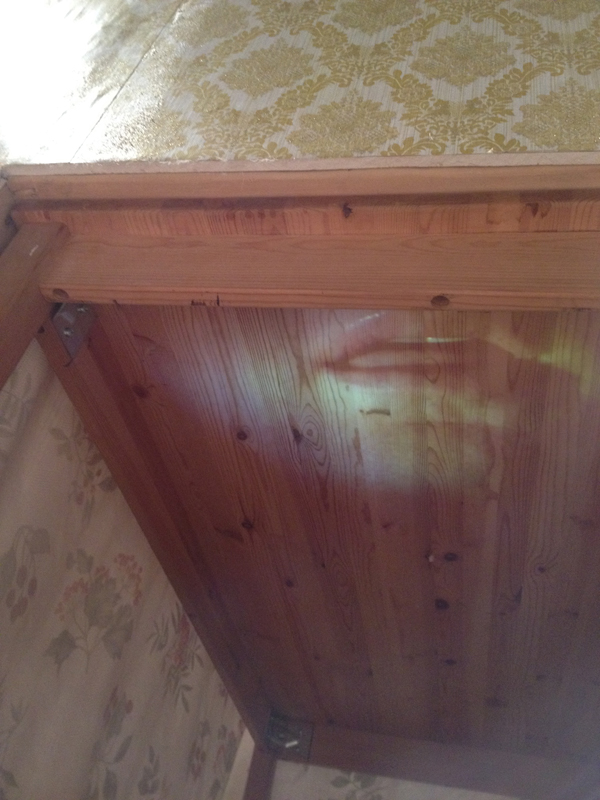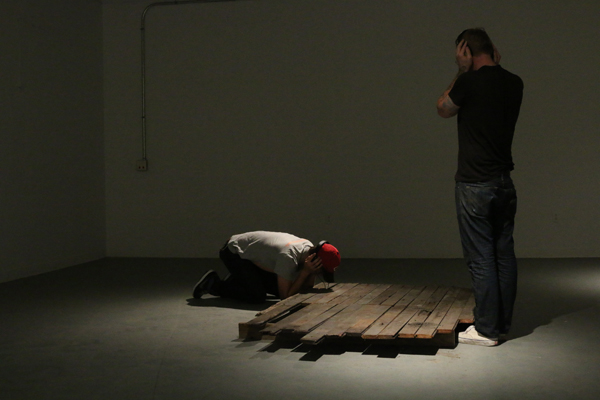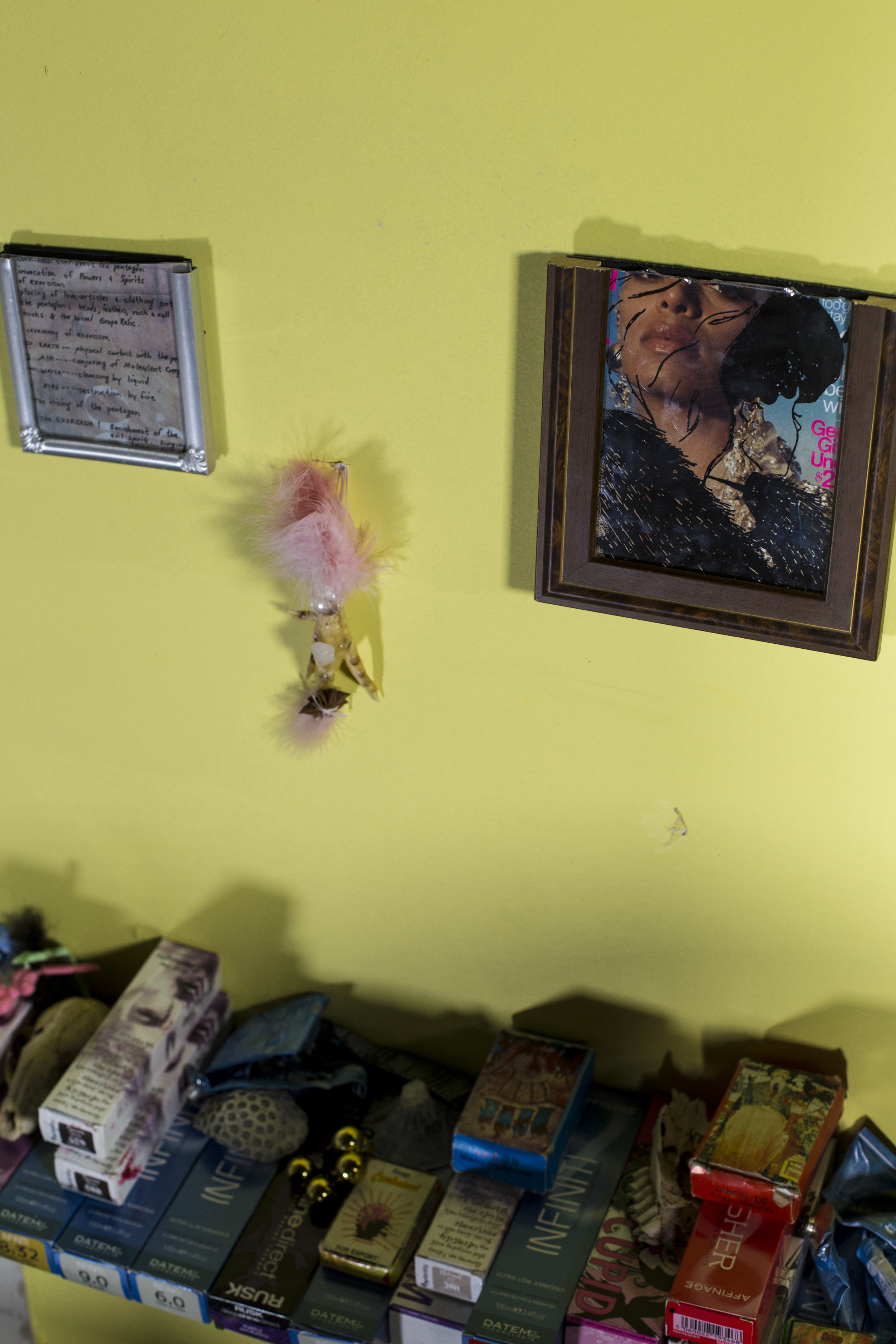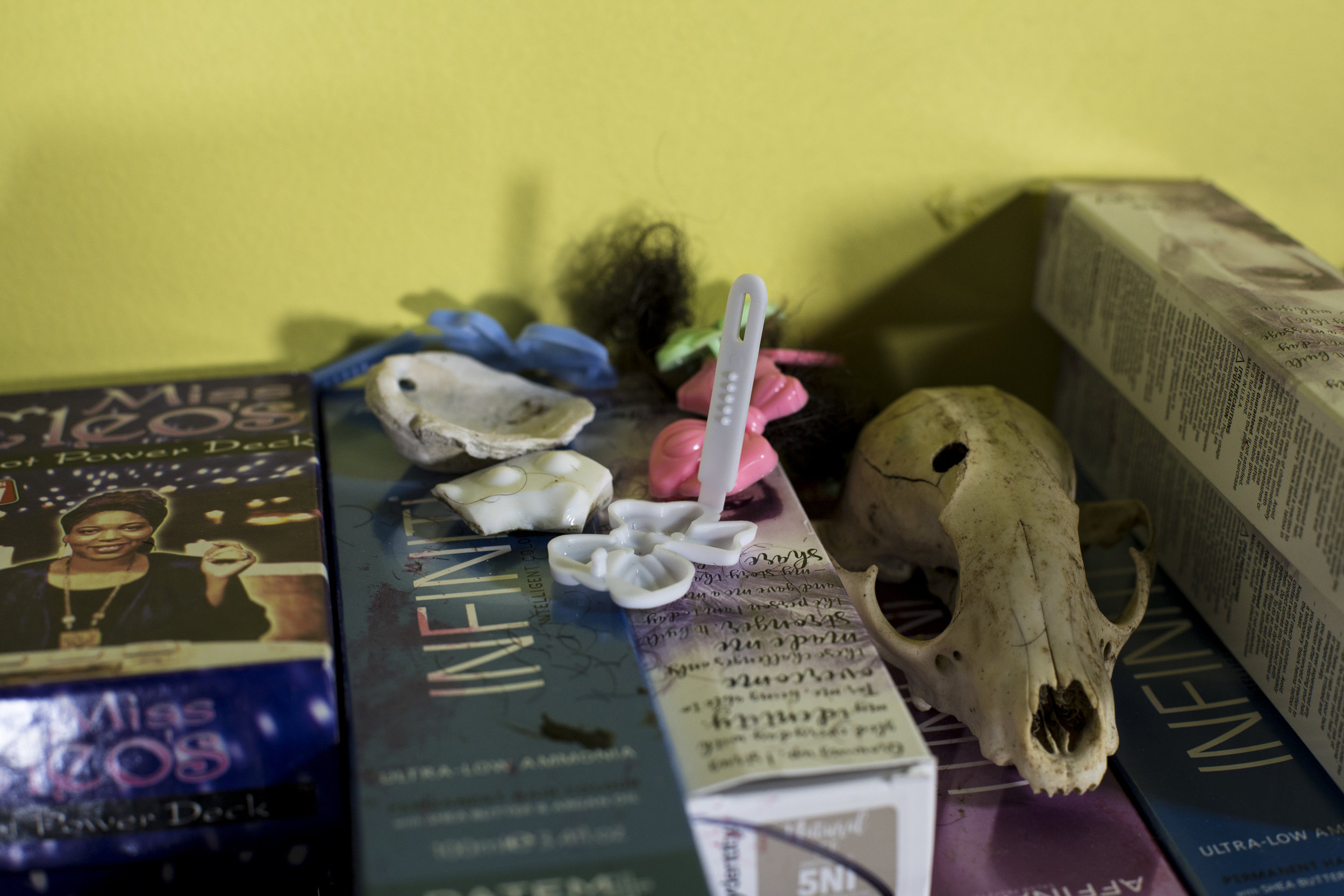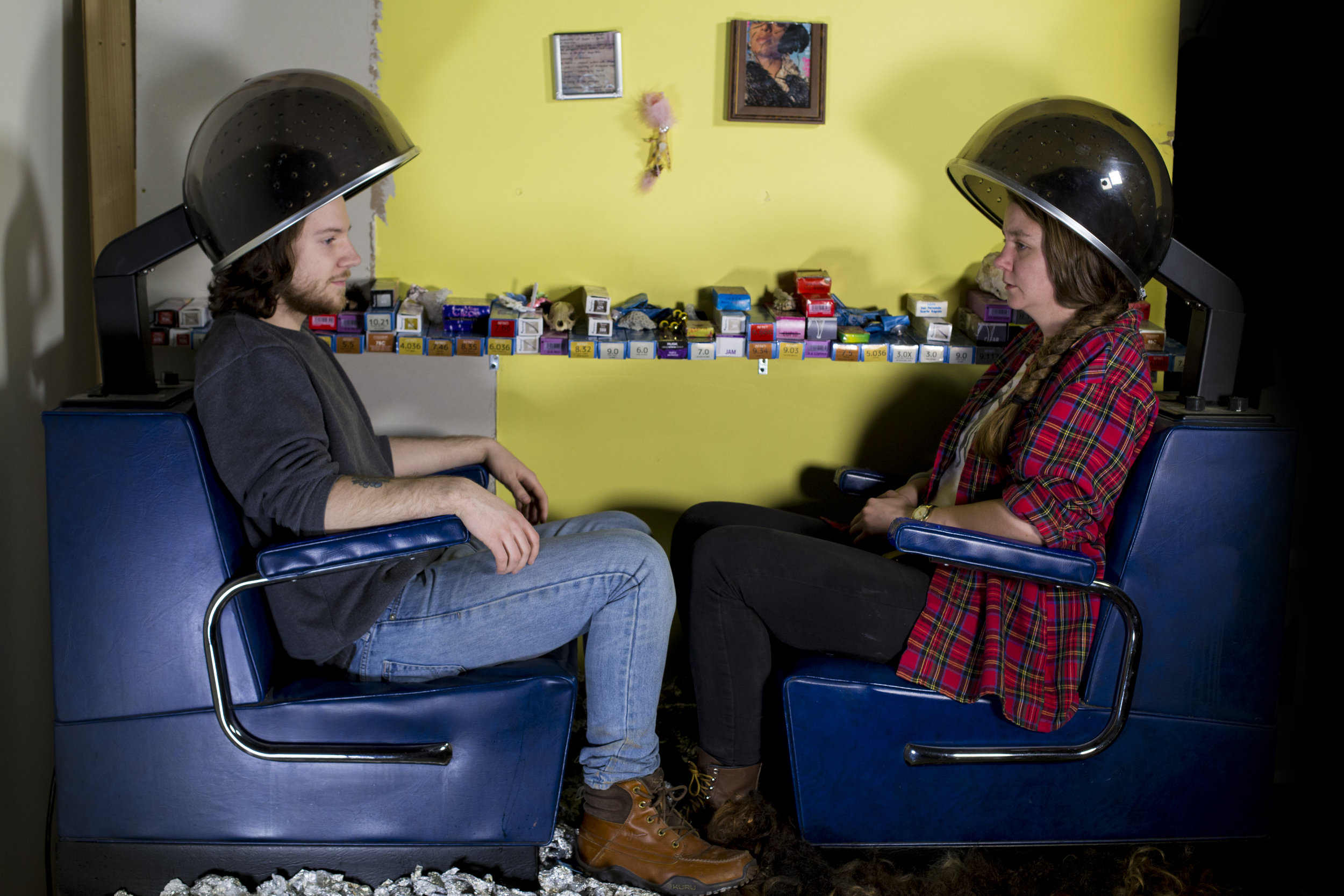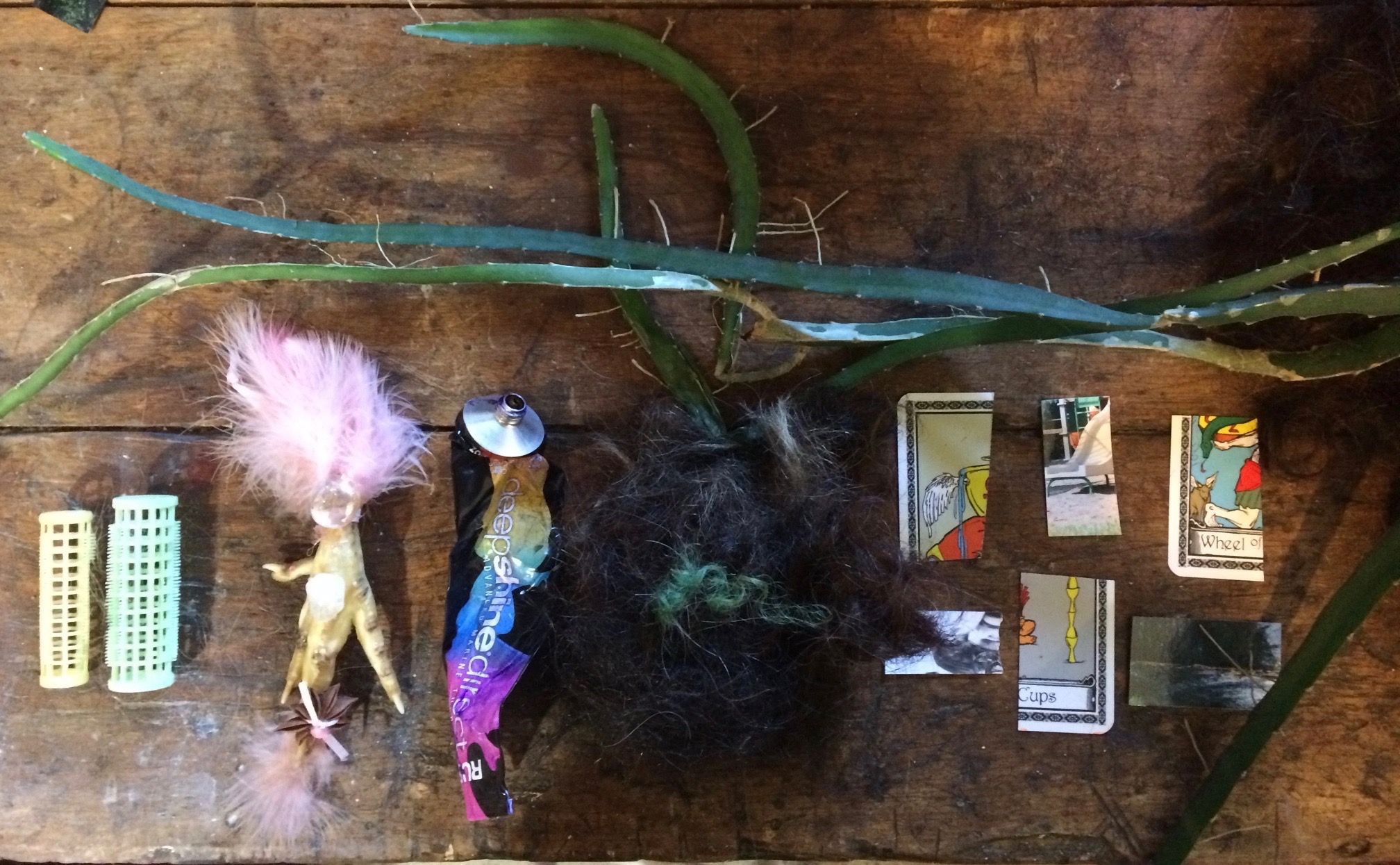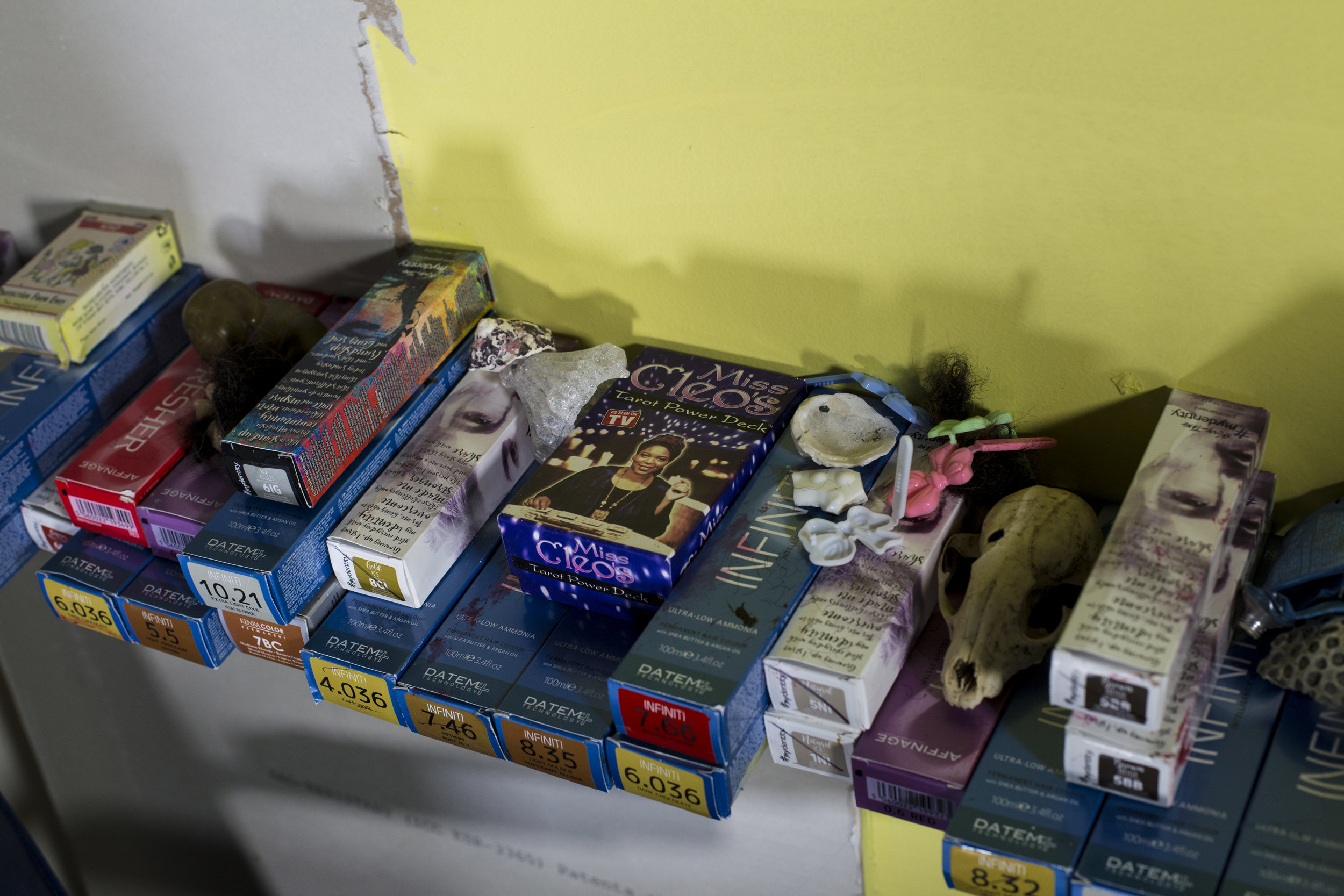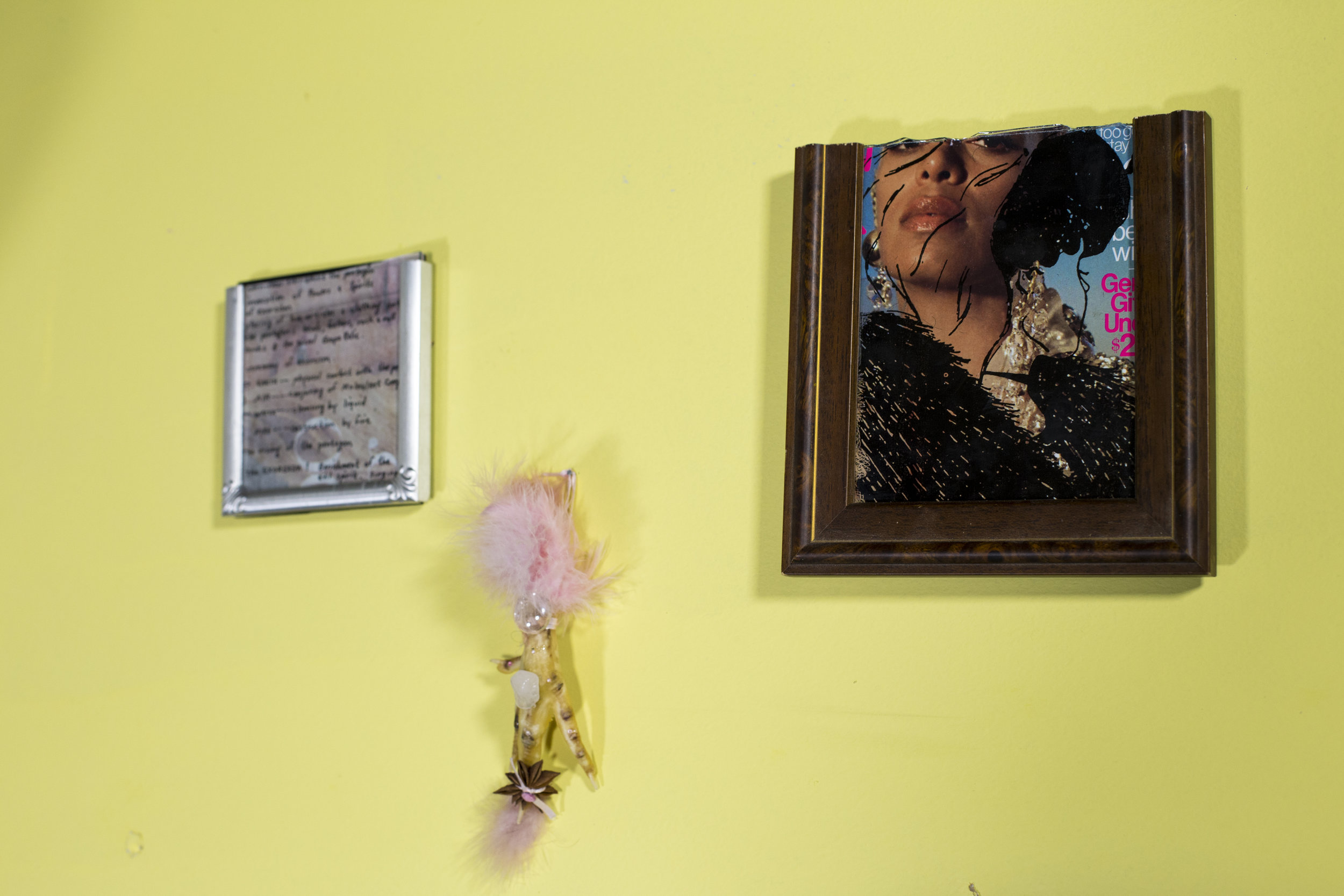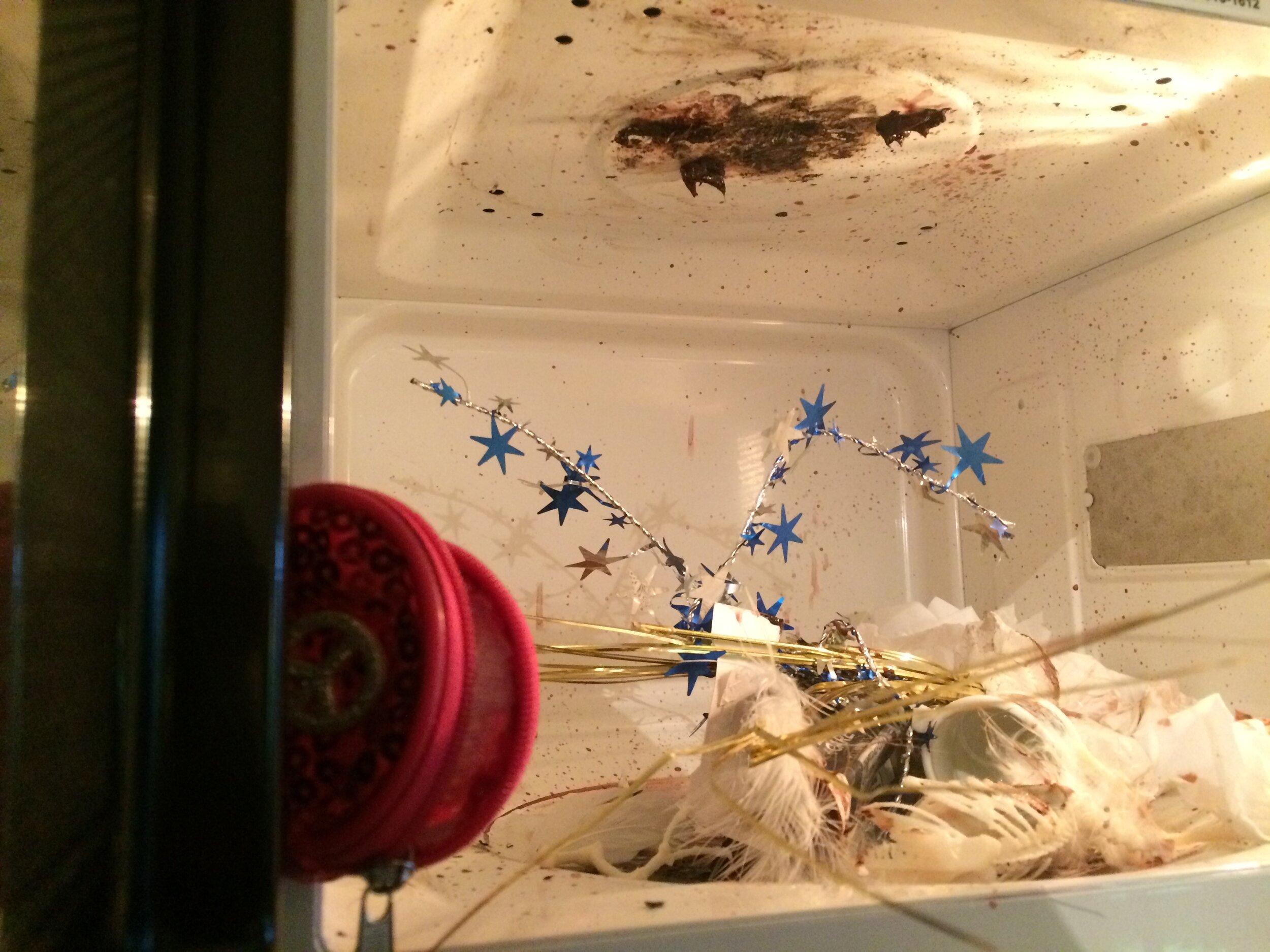“I am building a house out of ghosts, a space that becomes, asking what it might mean for these ideas to live together. It seems unlikely that these women will find harmony together in these scenes. One of the sisters at the kitchen table will surely tell Sylvia, “I just want you to be happy” , falling into the trap of her own making (Ahmed, 200-201). Kay will quite possibly shame one of The Unnamed for her jealous desires (Cvetkovich, 56-60). Maybe they will turn on each other and burn the whole thing down…The Archive of Disagreeable Women does not seek harmony. It seeks possibility for both terror and joy (Ahmed, 219). It seeks becoming.” -Jess Kiel-Wornson, 2016 (full text below)
The Bathroom: The Murderess
The viewer climbs the stairway in order to peer over an unfinished wall, seeing into the otherwise private bathtub. They projections of film scenes—women performing domestic tasks: sewing, ironing, making a bed, packing suitcases, washing dishes, dressing, etc., cut from the following films, all of which tell the story of the murderess (potential or actual): The Babadook (2014), The Stepford Wives (1974), Thelma and Louise (1991), Carrie (1976), Bathory: the Blood Countess (2008). The water in the bath moves slightly from the sound of a heartbeat playing beneath the bathtub, increasing in speed and volume, and stopping suddenly, or fading out.
The Bedroom: The Mother
The Bedroom (The Mother) asks the viewer to lie down, the weight of the viewer's body triggers a soundtrack, heard through the pillow, only audible to the participant. The track is a collection of a single voice, reciting words of different mothers, literary, historic, and contemporary. The mothers heard in this soundtrack include: Sethe of Toni Morrison's Beloved; Molly Bloom of James Joyce's Ulysses; social media posts from Francena Turner, Black mother, PhD in Education Policy, historian, and activist; mothers from Five Hour Energy commercials;d and mothers from various cough medicine commercials.
The Kitchen: The Sisters
The participant is invited to lie underneath the kitchen table through a hole to another "room". They can, from this vantage point, see a projected video on the underside of the table: a close-up of a man's mouth, surrounded by pale stubble, lips and teeth and tongue moving, shining, and licking.
The Foyer: The Unnamed
The participant sees others in action, and therefore feels invited to kneel in front of a woman-- the age and ethnicity of this woman changes throughout the exhibition--, place his/her head between her legs in order to see something hidden within her "chair".
The Porch: The Business Woman
This scene positions viewers opposite each other with two pairs of headphones. One pair is on a long cord, allowing the viewer to stand and listen to a male voice recite records of Conrad’s hog sales, detailing the price, buyer, name of the hog, and physical make up. A female voice chimes in occasionally, “Make me an offer”. The other pair of headphones is on a short cord, so that the participant must be on the ground, face only inches from the deck boards. The audio is a contemporary country song called Honky Tonk Badonkadonk, which describes a woman, much in the same way as the opposite pair of headphones describes the livestock sales.
The Beauty Shop: The Witch
Viewers sit across from one another in hair-dryer chairs, too close together, knees touching. Through the headpiece, a soundtrack plays, featuring various witch characters. Excerpts are taken from The Wizard of Oz (1939), Eve’s Bayou (1997), Macbeth (1948), Kate Bush’s Waking the Witch (1985), Todrick Hall’s Wrong Bitch (2016).
“an immersive installation exploring the archetype of the witch and of the beauty shop as her uniquely powerful, localized and feminized domain. This piece positions beauty shop gossip as undervalued community work, collective feminized care as a radical act of resistance, and the ways that the witch empowers marked bodies through physical ritual. The work is particularly concerned with the ways that the witch (and her beauty shop) is both born of, and answer to, oppressive white-supremacist, hyper-capitalist, patriarchal systems.”
The Efficiency (#7B): The (Dueling) Artist
